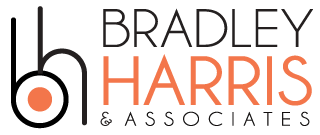Senior and assisted living recruiters continue to have their hands full during the COVID-19 pandemic. Not only are highly-qualified or experienced managerial-level candidates hard to come by under ordinary circumstances, but also recruiting for the industry has become more urgent. Open positions must be filled quickly to ensure that community management is not interrupted, putting residents, employees, and families at risk.
Companies also need to be aware of employee turnover. A string of new people entering and exiting the community can increase the risk of spreading the infection to the people who live and work within it. The question then is, how do we move forward?
Moving Forward With Recruitment
Assisted living recruiters are no doubt feeling increasing pressure to fill roles quickly during this pandemic.
According to the SHRM 2017 benchmarking report, the recruitment process can take as long as 36 days. But, seniors in communities rely on continuous care, so management needs to ensure that there is adequate staffing to cater to resident’s specific needs. Recruiters must, therefore, adapt creatively to respond to the growing demands of hiring in the industry.
With the length of the recruitment process being a critical factor, the shortest line from A to B is accessing resources at your immediate disposal. Lengthy recruitment processes can easily be reduced by leveraging existing industry relationships.
The desired result: to reduce the time to hire, time to productivity, as well as increase employee retention.

This can be managed in the following ways:
Access Existing Talent Pool
As an assisted living recruiter, you have access to a qualified talent pool of candidates. Because of this, you can provide personalized candidate recommendations to employers looking to fill specific positions.
Your focus in this time should be to renew relationships with candidates that may have fallen away over time. You can also remind employers that you have a pipeline of pre-qualified talent that they can access at short notice.
Leverage Qualified Referrals
Research shows that referrals are employers’ top source of hires. They cut down on the time spent sourcing candidates, as well as time to productivity once working on the job. Have you considered how you can leverage your existing team into a source of referrals? Using an easy tool like WorkTaps, you can get access to who they know and broadcast your open job. Your employees have many contacts and a few may be in senior living…
Whether it’s industry connections from previous employers or their college or university, people from their social and family circles – some may have the necessary skills, credentials, and experience perfectly suited to the roles you need to fill, it’s simply a case of finding them.
Access Candidates From Other Industries
Thinking outside the box in extraordinary circumstances could look like hiring candidates outside of the assisted and senior living industry.
For positions that don’t carry requisite healthcare qualifications, assisted living recruiters can dip into the talent pool of other industries to source suitable candidates. For example, roles such as chefs, activities directors, and housekeeping heads can be filled by people who are usually employed in the hospitality industry but are out of work at the moment. Although it’s two different industries, the underlying work remains the same, which means candidates can easily adapt to fill open positions at senior living communities. Keep in mind that you’ll have to do a good job with retention efforts because the world will open up again and if you’re not the employer of choice you’ll lose all these converts from those industries.

Approaching Interviews Under The New Norm
Thanks to the pandemic, interview trends are leaning towards doing this digitally where possible, to offer a safe space for the recruiters, hiring managers, and the applicants.
Of course, senior living recruiters are already familiar with carrying out interviews online. However, for the time being, hiring managers may need to come to grips with this new format, provided the interaction can be done without meeting face-to-face.
Applicants will also have to be familiarized with the new online process to ensure that interviews run smoothly and successfully.
What Might Hiring and Onboarding Look Like In Future
In light of reduced face to face interaction in the recruitment process, eventual hiring and onboarding methods will also need to be adapted where necessary.
Documents such as work contracts or training materials should be distributed electronically if possible to reduce contact.
Naturally, in-person meetings are unavoidable during onboarding. These should follow all sanitization, social distancing, and preventative measure protocols that the home has in place.
It’s also a fantastic opportunity for new employees to learn about the unique safety processes that the community has implemented while settling into their role and meeting residents and colleagues.
The Bottom Line
Time to hire and employee turnover are challenges now as well as moving forward. But with a pool of qualified candidates, the help of technology, as well as a set of efficient processes, recruiters in assisted living can comfortably adapt to the changes required to usher the industry into what may be the new normal. Good Luck!




